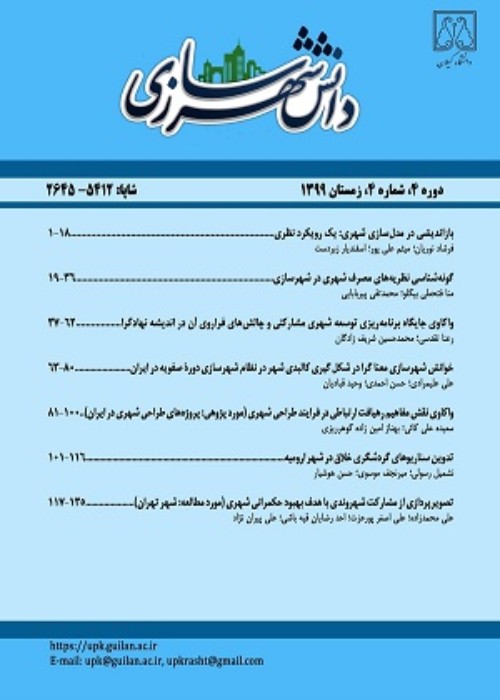Place-Making through Walkability Case Study: Urban Spaces Adjacent to Toopkhaneh Square in Tehran
This article, with the aim of changing an urban space into an urban place, measures the role of "walkability" in the sense of the place that it causes. The article tries to find how and to what extent the increase of walkability may develop and make the place more meaningful within the area.The research method is based on a case study in which the qualitative and quantitative data has been gathered through observations, in-depth interviews, and questionnaires. The efficient responses are assessed by the consensus of professionals, statistical documents as well as people’s opinions and field observations. Reviewing the urban design literature, the aspects of the place, as well as “walkability” factors are analyzed and three aspects, nine dimensions, and 23 measures are suggested to assess streets’ walkability. Information for each measure has then gathered through questionnaires and the entire outcome about research questions are statistically analyzed. Thus, both qualitative and quantitative methods are used together in this research.Based on a Likert-type scale each criterion, addressed by each question, is rated from one to five that one equals the most acceptable, and five equals the worst. The survey also includes the SWOT analyses (Strengths, Weaknesses, Opportunities, and Threats) addressing all questions. So, these diagrams again provide the ability to compare the qualitative measurement with the quantitative results of questioners. Based on this research, increasing the behavioral aspects of the studied streets will have the highest impact to balance the place quality. Pedestrianized streets have shown more balanced behavioral patterns, particularly in optional dimensions. Therefore, this research uses, for the first time, Jan Gehl’s model of triple behaviors, optional, social, and functional in order to define walkability.This research concludes that the increase of walkability means the enhancement of place aspects that balance the physical and non-physical aspects of a place. It recommends walkability as the main factor to evaluate urban development plans in historic zones. The sense of a place perceived by people who walk within the cities is one of the imperative factors which must not be neglected.
- حق عضویت دریافتی صرف حمایت از نشریات عضو و نگهداری، تکمیل و توسعه مگیران میشود.
- پرداخت حق اشتراک و دانلود مقالات اجازه بازنشر آن در سایر رسانههای چاپی و دیجیتال را به کاربر نمیدهد.


